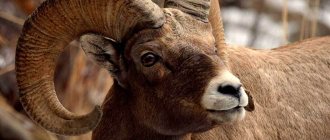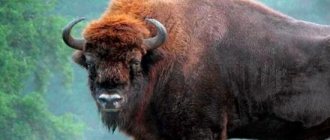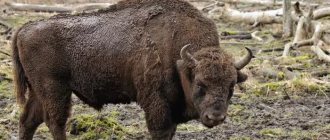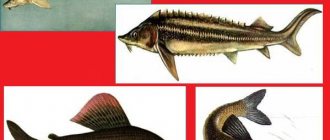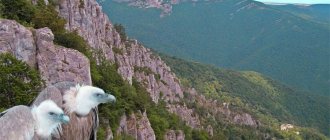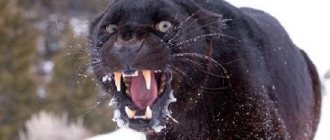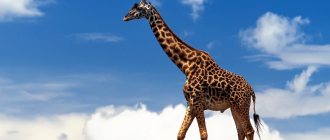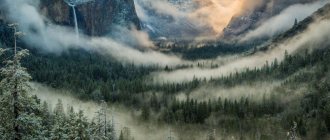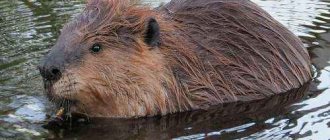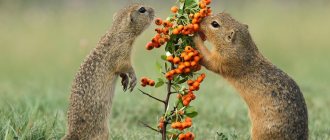Crimea is one of the most beautiful regions that has given the world natural diversity. This is a huge area that has preserved its wealth of beauty and diversity of flora and fauna. However, the rapid development of progress has also affected this corner of the world. Poachers, construction, deforestation, climate change are the reasons for the decline in the population of many animal species.
The latest edition of the Red Book was published in 2015. The document tells about 405 taxa that need protection. All presented plants and animals are protected. Hunting and catching representatives of the living world from the Red Book is punishable by law. Usually this is a large monetary fine. But if you break the law, you again face imprisonment.
Until 2015, the Red Book of Crimea did not exist, so its release became a landmark event for the region. This is not just a list of rare taxa, but a document that is intended to tell about vulnerable representatives of flora and fauna.
Crimea is one of the few centers of natural diversity. Due to its territorial location, relief, climatic conditions, and partial isolation from the continent, comfortable conditions are provided for most species. And the rarest ones are protected.
Limiting Factors
First of all, the diversity and uniqueness of the fauna and flora of the peninsula is determined by its geographical location. The small territory, about 27,000 km², is divided into three climatic zones: the mountain belt and subtropics on the southern coast, as well as a temperate continental steppe climate. These territories belong to the Black Sea basin and are located at the intersection of migratory routes of fauna representatives. Another interesting fact is that this area contains fifty salt lakes and two hundred and fifty-seven rivers. Experts have noticed that due to significant rates of genetic erosion, some plant species have been burned in recent decades.
Red Book
The peninsula is home to a huge number of exceptional animals that are on the verge of extinction. It was decided to create a document about such inhabitants.
The Red Book uses an eight-point scale to determine the degree of rarity. Animals of Crimea in the Red Book of Russia are the tricolored and pointed-eared bat, the common longwing, the small and large horseshoe bat, the black-headed gull, and the great curlew.
Fauna on the peninsula
It is known from history that ostriches and giraffes used to live on the peninsula, and due to climate change, people noticed arctic foxes and reindeer. In addition to animals, about two hundred species of fish live in the reservoirs of Crimea. Of these, there are forty-six in fresh lakes and rivers, fourteen of which are Aboriginal. The rest were brought to the peninsula and adapted well there.
In Crimea, there are fourteen species of reptiles, with only one poisonous - the steppe viper, as well as six species of lizards. Among the turtles, only the marsh turtle lives, which can be found in mountain reservoirs. About two hundred species of birds live here, living mainly in mountainous areas. Of these, seventeen species arrive for the winter. There are more than sixty species of mammals; they live in mountainous areas, as well as in nature reserves. The peninsula is home to foxes, badgers, martens, and predatory animals can also be found here. Hares and ferrets are found in forests and steppes. Wolves lived here, but their populations died out completely at the beginning of the twentieth century. The waters are home to monk seals and three species of dolphins.
Legless yellowbell
“A cruel joke of fate” - there’s no other way to describe the situation with the yellow-bellied one. In the process of evolution, this remarkable lizard lost its legs - the front limbs are completely absent, and the hind limbs are only two tiny rudimentary tubercles. The yellowtail can reach one and a half meters in length, with two-thirds of it being a mobile, strong tail. Adults are brownish-olive in color. And, unfortunately, a harmless lizard in the eyes of the average person is like two peas in a pod like a snake.
There is a sure way to understand whether there is a snake or a lizard in front of you - pay attention to the pupil. If in a snake it most often represents a vertical slit, then in lizards, and the legless yellowbell in particular, it is round. Of course, when meeting a yellow-bellied man, no one looks him in the eye, which, in principle, is true, because in his place there may be a very dangerous counterpart.
But, at the same time, a large number of people, having encountered a potentially dangerous animal on their way, are not in a hurry to end the meeting and go home, but deliver a “pre-emptive strike.” Frequent persecution by humans has led to a rapid decline in the number of yellowbellies in Crimea. This is how the unfortunate lizard suffers from its snake-like appearance...
The yellowbelly population is also declining due to the destruction of its habitats by plowing, construction, and fires.
However, once the controversial appearance of the yellowbell allowed representatives of this species to act as film actors. In the series of adventure films about Indiana Jones, a seeker of ancient artifacts and treasures, legless lizards played the role of snakes (of which, according to the plot, the archaeologist was terribly afraid).
Rare animals of Crimea listed in the Red Book
Among the rare mammals are the steppe ferret and the common shrew; their numbers are declining at a rapid pace. Wild sheep - mouflons - are also protected. This is the only herd in all of Eastern Europe. The lizard of the spindle family, or also called the yellow-bellied lizard, belongs to a protected species that is on the verge of extinction. The lizard has a large head and large eyelids. The yellowbell has a sandy yellow coloration with a dark pattern on the upper part of the body. Rare animals of the Red Book of Crimea: Mediterranean gecko, golden eagle, pygmy pipistrelle, white-bellied monk seal.
Red-breasted goose (Rufibrenta ruficollis)
Photo: Art G. from Willow Grove, PA, USA / Wikimedia Commons
Waterfowl. It is distinguished by black plumage on the back, neck, belly and upper part of the head. It has a white spot near the beak and a white stripe on the side. The bird has a chestnut crop, as well as brown spots near the ears and a dark beak. Juveniles are distinguished by their dark color and whitish stripes on the wings.
They make nests on the banks of rivers, near ravines. Their habitat is tundra and forest-tundra zones. The red-breasted goose flies to Crimea for the winter.
They feed on plant foods: seeds, shoots and roots of grass, leaves.
The geese population is threatened by poachers, as well as by environmental pollution, and there are cases of chemical poisoning.
Sea inhabitants
Crimean bottlenose dolphins are also protected. They are capable of speeds of up to forty km/h and emerge from under the water to a height of five meters. The white-bellied seal or monk seal is on the verge of extinction; there are only 600 representatives of this species left on our planet. For their desire for solitude, as well as their short hair, they were nicknamed monks. These rare animals of Crimea, listed in the Red Book, are quite awkward on land, but they feel great in the water. In search of food, seals can swim far from the shore and dive to a depth of up to five hundred meters. The animals reach a length of about two meters and weigh about three hundred kilograms. Males are usually covered with thick black fur, while females are noticeably lighter in color. Because of the light lower part of the body, the seal received another name - white-bellied.
Griffon vulture (Gyps fulvus)
Large bird of prey. Lives on dry mountains and plains. Breeds in the mountains in the south of Crimea.
Griffon vultures have a small head, disproportionate to the body, covered with whitish down. The beak is hooked. The neck is long, has a collar of large feathers. The tail is short and rounded. Plumage color is brown. Juveniles are distinguished by a pale brownish-reddish color.
During the flight, the vulture makes rather rare, slow, but deep flapping of its wings. It has a hoarse croaking voice, corresponding to the name of the bird.
Barn owls are scavengers and feed on the carcasses of mammals. While searching for food, they pay attention to the behavior of other scavengers.
Steppe and mountain fox
In the Crimean mountains you can find mountain foxes, and in the steppes - their steppe subspecies. They feed mainly on hamsters, gophers, mice, and in rare cases even wild rabbits.
In times of hunger, foxes eat lizards, insects and frogs. Due to the fact that these animals listed in the Red Data Book of Crimea are susceptible to rabies, tourists should be careful. Previously they were vaccinated, but now this does not happen. There are no frequent encounters with these animals, because they are very careful and shy.
Siskin (Carduelis spinus)
Photo: Baresi franco / Wikimedia Commons
A songbird often found in coniferous forests.
It is yellow in color with a green or olive tint and covered with dark spots. The wings have black spots.
In the summer season, siskins live in pairs. With the onset of autumn they form flocks. They feed on insects and seeds of coniferous and deciduous trees. Siskins are located high in the treetops and rarely descend to the ground.
Weasel
At first glance it may seem that this is a very small and peace-loving animal, but even wolves cannot compare with the bloodthirstiness of the weasel. However, she is often tamed and becomes quite a gentle pet.
The weasel will quickly make friends with other household inhabitants. Insects and rodents will never appear in the house in which this animal lives. However, in captivity, weasels barely survive to the age of five.
Black-headed gull (Larus ichthyaetus)
Photo: Dmitry Mikhirev / Wikimedia Commons
Quite large birds from the gull family. They have light gray plumage and black spots on the tips of the wings. During the mating season the head becomes black, in winter it becomes white with dark spots.
They inhabit islands and spits of shallow sea waters.
They eat fish, crustaceans, insects, rodents, and reptiles.
Factors threatening the population of the black-headed gull: raids on the nests of the gull and raccoon dog, struggle with the great cormorant for roosting places.
Badger
A peaceful representative of the animal world of Crimea of the Mustelidae family. Sables and otters are considered to be the badger's cousins. These animals are very brave and energetic representatives of the fauna. Their burrows are like caves, consisting of several floors, and can reach twenty meters in length. Each floor has its own purpose.
This is a fairly clean animal, so the house is cleaned daily. The floor of the burrows is strewn with fragrant grass, which is changed twice a year. The burrow is constantly being expanded and improved. After a certain amount of time, the holes turn into entire badger underground cities. These animals, listed in the Red Book, in Crimea feed mainly on mushrooms, wild berries, acorns, as well as gophers, snails and mice. In addition, badgers love honey. These are peaceful animals, but when it comes to their fellow creatures or their home, they stand to the end.
Whistling teal (Anas crecca)
One of the smallest representatives of the duck family. Weighs no more than 450 grams. Males are distinguished by a bright green patch of feathers on the wing, females look like ordinary ducks.
In addition, the teal has narrow, sharp wings, so its flight is fast and silent. It is capable of taking off almost vertically relative to the surface of water and land. This ability allows him to obtain food in hard-to-reach places where other birds cannot reach.
The diet of the species consists of both plant and animal foods: seeds and green parts of aquatic plants, invertebrates living in water.
A wild boar
These animals lived in Crimea since ancient times, but in the nineteenth century they were completely destroyed. Since 1957, one wild boar and thirty-four females from the Primorsky Territory were brought from the Chernigov region. Subsequently, the number of individuals increased significantly.
The wild boar, an animal from the Red Book of Crimea, a photo of which can be seen in the article, feeds on various roots, mushrooms, nuts or acorns. In rare cases, they can feed on insects, bird eggs and rodents.
Pink pelican (Pelecanus onocrotalus)
A rare bird that, contrary to its name, does not look pink at all. Its plumage is rather white with a slight pink tint. Adult birds have black-brown edges on their wings.
They feed near the sea and fresh water bodies, preferring small or medium-sized fish.
The pink pelican population is threatened by predatory laughing gulls and raccoon dogs that steal eggs, as well as fishermen who devastate bird colonies. Therefore, the species is carefully protected by the Crimean Nature Reserve.
Crimean red deer
Deer is the largest animal on the peninsula. Its weight can reach 260 kg, and they grow up to 140 cm in height. Basically, the life expectancy of Crimean deer is 60–70 years. Horns are considered their main weapon. In Crimea, only hunters are considered enemies of deer. Thus, they use their horns during fights for the female, which, as a rule, occur in September.
At the beginning of the twentieth century, deer, animals listed in the Red Book, almost completely disappeared in Crimea. Beginning in 1923, a ban on the shooting of deer came into force. And already in 1943 the number of individuals increased to two thousand.
Pied rock thrush (Monticola saxatilis)
Photo: Imran Shah from Islamabad, Pakistan / Wikimedia Commons
An unusual bird resembling a hybrid of a thrush and a rock pigeon. More precisely, only males look like a hybrid: the neck and head are gray-blue, and the rest of the body is brown with a reddish belly, chest, tail and white rump. Females are distinguished by brown-gray plumage with dark speckles.
They prefer treeless spaces, the southern slopes of mountains, and nest in rock cracks. They feed on insects, sometimes rock lizards.
Roe
There was a time when these animals lived in the steppes of Crimea. Nowadays, roe deer live on the slopes of the Main Mountain Range; in addition, they can be found in forests. When meeting people, the animal freezes for a few seconds, then, realizing that it has been noticed, disappears with great speed into the forest thickets. Roe deer are similar to deer. These animals, listed in the Red Book, in Crimea feed on tree buds, bark, and herbaceous plants. Male individuals have horns, which they shed at the beginning of the autumn period. In the spring, the antlers grow back. Foxes and martens are considered enemies of roe deer. Animals have excellent hearing. As soon as they sense danger, they immediately warn their brothers. Their scream can be heard over a distance of three kilometers.
Active recreation in the mountains
The Crimean mountains are also called “home mountains”. They should not be treated recklessly; here we are talking about their accessibility for mass visits, compactness and low height compared to other regions of Russia. The mountains have the purest air, amazing nature with rare animals and blooming herbs. Here you can watch sunsets and sunrises, sit in silence or listen to a guitar by the fire, listen to birdsong and see the coast from the heights of steep rocky ledges.
Hiking and trekking
Traveling through the mountains of Crimea can be done either alone or with a group of like-minded people. The routes are simple, there are markings and fairly detailed maps of the area. You can stay in guest houses or camp sites and go out every day, spending the night in comfortable conditions. You can pack a large backpack and go on a category hike, walking along the main ridge of the Crimean mountains with a tent. If you are not confident in your abilities, you should choose a good instructor-guide who will select the optimal route to your liking. You will cover interesting places as much as possible, you will not be left without water during the night, you will calculate the time before stopping at a spring and you will learn a lot of useful information about the region. If you decide to go on a hike spontaneously, you can rent equipment; all you need is sportswear and shoes, as well as personal motivation.
Self-guided walking tours
This is a light hike with increased comfort. Every day you make full treks on foot, taking with you only the essentials (snack, raincoat, water, camera, etc.). And your backpacks and overnight equipment are transported by an escort vehicle to the parking lot. At the same time, you don’t even have to cook food if there is a separate kitchen with a cook on the route. For family tourism, this is an ideal solution, especially if one mother is going on a hike or you have several children for whom it is difficult to carry a bunch of things. More details about this type of recreation can be found here.
Bike tours
Depending on the organization, they can be compared to hiking and walking tours, but only using a two-wheeled vehicle. Usually a group of like-minded people is recruited, who are transported to the starting point and travel lightly along the route, at the end of which they are met. You can organize cycling trips for one day or with a full load for several days. There are a lot of places in Crimea where you don’t have to pedal up steep mountains. You can choose picturesque roads in the Bakhchisarai region or in eastern Crimea, where the elevation changes are small and the scenery around is picturesque.
Jeeping (quad tours, enduro)
Available wherever the territory does not fall under specially protected status. There are warning signs and warning signs, and there are barriers on the roads. This type of recreation is most accessible in the summer, when they are ready to take you on jeep rides under any pretext if you pass by on foot. Take a ride to a waterfall or lake, which are located along the way. You can get into the mountains and explore the route with much less time and effort. Of course, not all trails and places are accessible, but this is enough to get to know the mountainous Crimea.
Horse rides
A very interesting, leisurely, contact holiday. Horses have long been used by people as faithful assistants both in war and on the farm. They are hardy, graceful and ready to travel with a companion on their back along steep slopes, narrow paths, and wade across rivers. Horseback riding helps relieve stress, enjoy picturesque views, and communication with horses remains a pleasant experience in the memory for a long time. For beginners, it is better to choose short routes and remember to wear appropriate clothing (no shorts). A photo session on horseback will be an excellent souvenir.
Photo tours
With the popularity of DSLR cameras, there was a surge in the popularization of photography about 10 years ago. Many photography schools have opened, producing a wide variety of master photographers. Gradually, the ways of earning money from this craft began to be diversified by conducting special on-site programs. Landscape photo tours are now popular in Crimea, combining elements of hiking, jeeping and the art of photography. The programs also include master classes on photo processing. The organizing instructor will always offer unusual locations and advantageous angles in the most beautiful places. But be prepared for night shooting, early rises and long journeys. Here the daily routine is unpredictable, you often need to catch weather conditions and light, but the results of such work are excellent.
Mountaineering and rock climbing
This type of recreation can be classified as extreme. In Crimea, due to the natural diversity of relief forms, there are many places where you can practice climbing of varying degrees of difficulty. routes and multi-pitches freely available for you If you are interested in training, there are good “mountain climbing schools” in Crimea (Bakhchisarai, Sudak), and you can find specialists in other regions. There are quite simple routes for beginners, including children. The rocky area in Staroselye in the city of Bakhchisarai is very convenient in this regard.
Caving tours
In addition to the well-known equipped caves of Crimea, there is an opportunity with special equipment to visit the world of caves inaccessible to the average person. They are prepared for visits by specialists, “pierced” for organizing belay points, so if you have the skills to organize a hitch for descent, you can immerse yourself in the beauty of the underground world. For unprepared participants, an experienced instructor will always conduct training sessions on ascent and descent techniques, organize mounting and belaying, and will be happy to introduce you to technically simple caves (for example, the popular Gugerdzhin mine on Chatyrdag).
Canyoning
Extreme tours that involve overcoming obstacles using special equipment along steep walls with waterfalls in several rope stages. As such, there are no technically serious canyons in Crimea, so the term “canyoning” is used in the descent along the cliffs along the Sotera River (further passing into Alaka); the descent along the Uchan-Su waterfall and some other waterfalls is slightly less popular. In summer there is little water in the rivers, so wetsuits are not used. In winter, the water freezes and it becomes possible to conduct ice climbing in certain areas.
Absailing
Translated from German, abseiling is a descent down a steep slope or vertical wall using a rope attached to the top using descending devices. For this purpose, the most picturesque areas with high rocky ledges are selected to give the event maximum attractiveness. For example, the descent from the White Rock, Kachi-Kalyon, from the rocks near the Red Caves. Also an interesting location for descents in several stages are the Miskhor grottoes (recommended for trained participants with abseiling experience) and the descent from the top of Stavri-Kaya.
Skiing and snowboarding
In Crimea, these activities face the main problem - a warm winter. As a result, you have to wait for heavy snowfalls, when the plateau in the mountains is covered with a decent layer of snow and is well compacted for skiing. Otherwise, there is a risk of scratching the surface on the stones. Then you can go for freeride on the Chatyrdag plateau or go higher, to the Ai-Petri plateau, where several ski lifts are launched during the season. You should not go after heavy snowfall, since the road is not cleared and you simply will not reach the slopes, getting stuck in the snow. If the car is not prepared for driving in the mountains (no all-wheel drive), then in principle do not try to drive there in winter conditions. Often the weather below is radically different from the weather at the top and can change dramatically.
What animals are listed in the Red Book of Crimea?
- The common shrew is considered one of the rarest species of mammals. Mainly lives in the mountainous and forest part of Crimea.
- The steppe ferret is a representative of predators. These animals feed on small vertebrates, as well as mouse-like rodents.
- The leatherback pipistrelle leads a mostly sedentary lifestyle. Feeds on small insects.
- The common badger is active in the twilight and night time. The length of the body is from 60 to 90 cm, the tail is 20 cm long. The head is small, the paws have powerful claws.
- The small gopher lives in burrows that reach almost two meters in depth, and their length is more than four meters. Distributed in wormwood and forb-feather grass steppes.
Animals of Crimea, listed in the Red Book of Russia, are the giant noctule, the gray shrike, the eagle owl, the lesser tern, the blackeye, and the steppe tirkushka.
Gray lark (Calandrella rufescens)
Photo: Juan Emilio from Las Palmas de Gran Canaria, España / Wikimedia Commons
A songbird, slightly larger than a kinglet - 15 cm. Males and females do not differ in color. The upper part of the body is covered with dark spots and has a gray-brown tint, the underside is white. There are dark specks on the sides and crop. Like the king, the lark has white brow ridges. Juveniles are distinguished by more variegated plumage.
They live in steppes with low vegetation. The lark eats seeds, ants, and small bugs.
The lark population is constantly declining as there are fewer and fewer nesting sites.
Birds
The gray crane is protected by law and hunting is prohibited everywhere. On the peninsula, the animal lives exclusively in marshy meadows and reed thickets. The pink starling is also included in the Red Book. He lives on Mount Opuk. The red-headed wren is common in the mountainous regions of Crimea. The eagle owl is a rare bird in Crimea. Active, as a rule, at night, hunting small animals and vertebrates.
The Crimean peninsula is a small Universe that combines a diverse climate, unique nature and diverse flora and fauna.
Animals that need protection, as well as endangered species, are listed in the Red Book. The first edition was published in 2015. The first volume describes the animal world. Here are some names of animals listed in the Red Book of Crimea: steppe ferret, common shrew, common badger, leatherback pipistrelle, small gopher. The second volume is devoted to plants, fungi and algae. A total of four hundred and five species of plants and fungi are included, as well as three hundred and seventy species of animals. The Red Book is considered an official document containing information about wild animals, plants and mushrooms that permanently or temporarily reside (grow) on the territory of the Crimean peninsula.
Common flamingo
We move from those born to crawl to those who can fly. And let's start with a beautiful, unusual bird, which we invariably associate with distant exotic countries.
Perhaps the common flamingo will stand out somewhat from the general range of species we survey for the reason that it does not permanently live in Crimea. This representative of the flamingidae family is a wintering species on the peninsula. However, flamingos themselves are migratory birds; it is difficult to catch these travelers anywhere for a long time. And the incredible adaptability of the species allows people to meet this noble bird in completely different parts of the planet: from hot volcanic lakes to cold Andean reservoirs.
In Crimea, groups of flamingos have been regularly recorded since 1994, but isolated encounters have occurred before. The impressive bird has taken a fancy to (northwest of the peninsula) some estuaries of the Black Sea and Saki regions, the Kerch Peninsula, as well as the salt lake Adzhigol near Feodosia.
For local residents, the days when flamingos arrive have long been a real holiday, and dozens of curious people come to admire the long-legged birds with pinkish plumage and an impressive beak. It must be admitted that not everyone behaves consciously in this regard. Some people so vigorously express their delight at meeting the prototype (as legends say) of the fabulous phoenix bird that they simply frighten the unfortunate flamingos, who prefer to avoid the noisy neighborhood as soon as possible.
Unfortunately, the ecological situation in flamingo wintering areas often leaves much to be desired. The same Lake Adzhigol is located in an area of intensive development and often nearby villages dump waste into it.
In order for the common flamingo to continue to pay us visits and feel comfortable on the peninsula, it is necessary not only to protect the bird’s wintering grounds, but also to carry out outreach work with the population.
